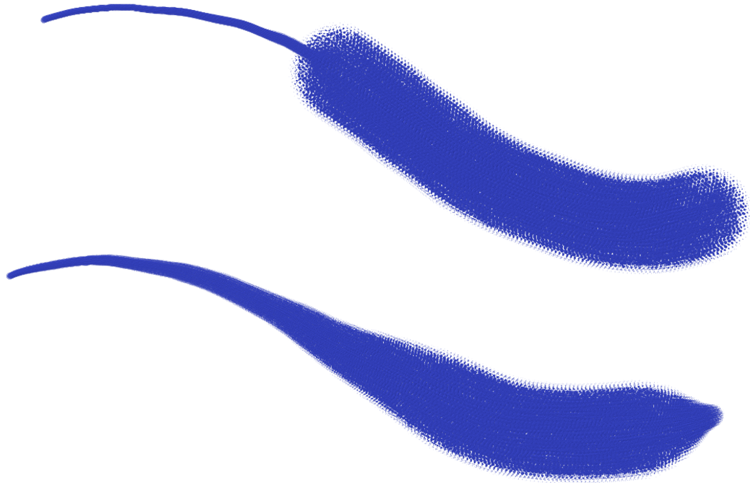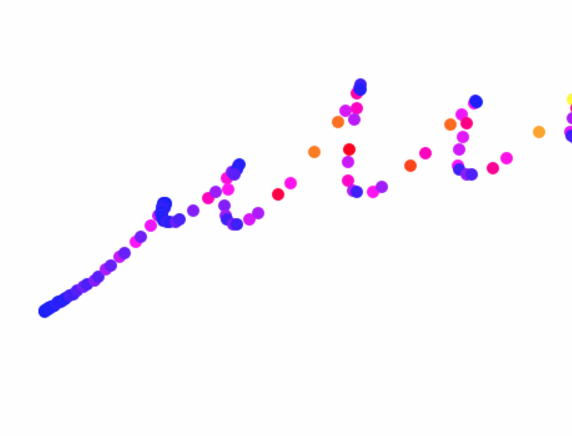Brush tracking and calibration
When you draw with traditional media, the amount of pressure that you use with a tool determines the density and width of your strokes. Using a pressure-sensitive stylus with Corel Painter gives you the same kind of control. Because each artist uses a different strength or pressure level in a stroke, you can adjust Corel Painter to match your stroke strength for all brushes by using the Brush Tracking preferences, or for a specific brush, by using the Brush Calibration controls.
Brush Tracking for all brush variants
Brush Tracking is particularly useful for artists with a light touch. If a light stroke leaves no color on the canvas, you can use Brush Tracking to increase sensitivity for all brushes. Corel Painter saves Brush Tracking between sessions, so whatever tracking sensitivity you set will be the default the next time you open the application.
Abrupt changes in the width or density of your strokes shows that you need to adjust your Brush Tracking preferences.
Top: A brushstroke with abrupt changes in width. Bottom: A similar brushstroke with adjusted brush tracking.
The most common way of adjusting brush tracking is to apply a typical brushstroke, such as a wavy stroke, to the scratch pad. Corel Painter then uses your stroke to calculate the appropriate pressure and velocity settings for all brush variants. However, you can also specify pressure and velocity values.
Use the scratch pad in the Brush Tracking dialog box to customize how Corel Painter responds to your stroke pressure and speed.
In addition, Corel Painter includes the following brush tracking presets that you can choose from: Default, Legacy, and Linear.
The graph in the Brush Tracking dialog box shows how increasing the pen pressure affects brushstrokes, which are referred to as "output" in the graph.
The graphs for the Default preset (upper left), the Legacy preset (upper right), and the Linear preset (lower left)
By default, brush tracking settings apply to all brush variants, but you can also limit them to only the current brush variant.
Brush Calibration for individual brush variants
The Brush Calibration controls are very useful for adjusting individual brush variants. You can modify the pressure of your stroke on the scratch pad to achieve different results. For example, you could use a light touch when sketching with a pencil brush variant, but set more pressure when using an oil paint brush variant. Corel Painter saves Brush Calibration control settings with the brush variant, so whatever sensitivity you set will be the default the next time you choose the brush variant. If you set Brush Calibration for a specific brush in addition to general Brush Tracking preferences, the Brush Calibration settings override the Brush Tracking preferences.
Manually adjusting pressure and velocity
When you use the scratch pad to set brush tracking and calibration, Corel Painter calculates the pressure and velocity settings for you. However, you can manually adjust these settings. For example, you can adjust the stroke pressure to achieve a full pressure range with a softer or harder touch by using the Scale and Power sliders for pressure. You can also adjust the stroke velocity to achieve a full velocity range with a slower or faster stroke by using the Scale and Power sliders for velocity.
To ensure that a brush control is using the pressure or velocity settings, you need to set the brush control Expression setting to Pressure or Velocity. For more information, see Expression settings.

